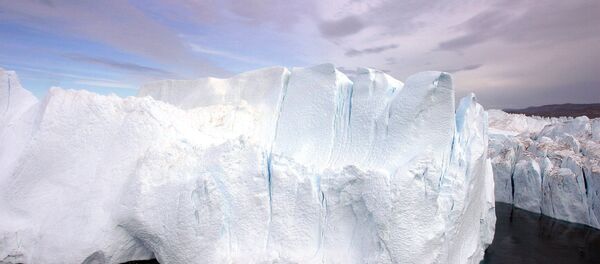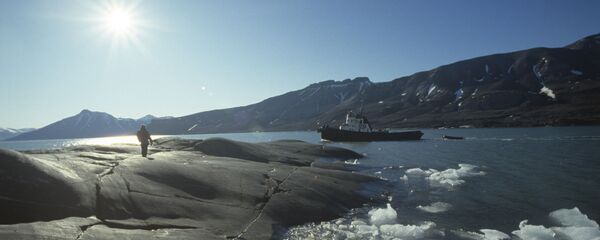"It's so big! It will produce a big crash and large waves. This will hardly be a safe spot for onlookers. But it would be really cool and really scary," Nina Kirchner, a glacier researcher at Stockholm University, which plans to send a robotic submarine under the shelf ice in Greenland and Antarctica, told Swedish national broadcaster SVT.
The rift has also become wider, from about 200 to 350 meters. Now that the Antarctic summer brings more heat, the crack will be filled with melt water that destroys the ice at an increasing speed. Meltwater pools on top of the floe can also do considerable damage. Researchers are unable to predict a concrete date for the breakoff, yet indicate a time bracket of several years.
Time running out for Larsen C?https://t.co/aYpNhfI5N1 pic.twitter.com/aXhzxd4qJ7
— Gavin Schmidt (@ClimateOfGavin) August 18, 2016
Global warming has been blamed for the split; many scientists attribute rising temperatures to the anthropogenic emissions of greenhouse gases. According to researchers, the Antarctic ice melts both from the top due to sun radiation, but also from below by means of warmer ocean water. Calculations showed that the sea water is melting an average of 30 centimeters of ice a year. According to Nina Kirchner, the rise of the ocean water temperature, despite being only a fraction of the air warming, makes the ice unstable and likely to decompose.
When the edge of the flow is no longer able to hold back the ice mass, the underlying glaciers begin to gush into the sea in a process similar to pulling a plug. If this happens to Larsen C, sea levels may rise by up to ten centimeters.
Situated in the northern part of the Weddell Sea, Larsen C is the fourth largest ice shelf in Antarctica and is estimated to be 20,000 years old. The Ross and Ronne-Filchner ice shelves, Antarctica's largest, are both the size of Sweden. If they disappear and glaciers release more fresh water into the sea, the Earths' entire ocean circulation will be affected.
A lengthening crack is threatening to cause an Antarctic ice shelf to collapse https://t.co/HrAXVnVd6D
— Mashable (@mashable) August 22, 2016
"The entire process that transports heat around the globe initiates here. So we shall notice a change even if we are sitting on the other end of the globe," Nina Kirchner said, calling for action to stop the melting of the Antarctic ice.
Find MISR data like that shown in Larsen C story https://t.co/XpMGqzZkuE @NASA ASDC DAAC. https://t.co/Azfazk4A24 pic.twitter.com/SBr0wE93KT
— NASAEarthdata (@NASAEarthData) September 8, 2016






